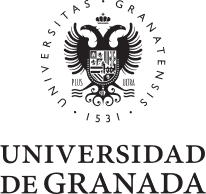Ambient Air Pollution in Relation to SARS-CoV-2 Infection, Antibody Response, and COVID-19 Disease: A Cohort Study in Catalonia, Spain (COVICAT Study)
Kogevinas, Manolis; Castano-Vinyals, Gemma; Karachaliou, Marianna; Espinosa, Ana; de Cid, Rafael; Garcia-Aymerich, Judith; Carreras, Anna; Cortes, Beatriz; Pleguezuelos, Vanessa; Jimenez, Alfons; Vidal, Marta; O'Callaghan-Gordo, Cristina; Cirach, Marta; Santano, Rebeca; Barrios, Diana; Puyol, Laura; Rubio, Rocio; Izquierdo, Luis; Nieuwenhuijsen, Mark; Dadvand, Payam; Aguilar, Ruth; Moncunill, Gemma; Dobano, Carlota; Tonne, Cathryn
Publicación: ENVIRONMENTAL HEALTH PERSPECTIVES
2021
VL / 129 - BP / - EP /
abstract
BACKGROUND: Emerging evidence links ambient air pollution with coronavirus 2019 (COVID-19) disease, an association that is methodologically challenging to investigate. OBJECTIVES: We examined the association between long-term exposure to air pollution with SARS-CoV-2 infection measured through antibody response, level of antibody response among those infected, and COVID-19 disease. METHODS: We contacted 9,605 adult participants from a population-based cohort study in Catalonia between June and November 2020; most participants were between 40 and 65 years of age. We drew blood samples from 4,103 participants and measured immunoglobulin M (IgM), IgA, and IgG antibodies against five viral target antigens to establish infection to the virus and levels of antibody response among those infected. We defined COVID-19 disease using self-reported hospital admission, prior positive diagnostic test, or more than three self-reported COVID-19 symptoms after contact with a COVID-19 case. We estimated prepandemic (2018-2019) exposure to fine particulate matter [PM with an aerodynamic diameter of <= 2.5 mu m (PM2.5)], nitrogen dioxide (NO2), black carbon (BC), and ozone (O-3) at the residential address using hybrid land-use regression models. We calculated log-binomial risk ratios (RRs), adjusting for individual- and area-level covariates. RESULTS: Among those tested for SARS-CoV-2 antibodies, 743 (18.1%) were seropositive. Air pollution levels were not statistically significantly associated with SARS-CoV-2 infection: Adjusted RRs per interquartile range were 1.07 (95% CI: 0.97, 1.18) for NO2, 1.04 (95% CI: 0.94, 1.14) for PM2.5, 1.00 (95% CI: 0.92, 1.09) for BC, and 0.97 (95% CI: 0.89, 1.06) for O-3. Among infected participants, exposure to NO2 and PM2.5 were positively associated with IgG levels for all viral target antigens. Among all participants, 481 (5.0%) had COVID-19 disease. Air pollution levels were associated with COVID-19 disease: adjusted RRs = 1.14 (95% CI: 1.00, 1.29) for NO2 and 1.17 (95% CI: 1.03, 1.32) for PM2.5. Exposure to O-3 was associated with a slightly decreased risk (RR =0.92; 95% CI: 0.83, 1.03). Associations of air pollution with COVID-19 disease were more pronounced for severe COVID-19, with RRs =1.26 (95% CI: 0.89, 1.79) for NO2 and 1.51 (95% CI: 1.06, 2.16) for PM2.5. DISCUSSION: Exposure to air pollution was associated with a higher risk of COVID-19 disease and level of antibody response among infected but not with SARS-CoV-2 infection.
Access level
Gold, Green published
MENTIONS DATA
Pharmacology & Toxicology
-
0 Twitter
-
27 Wikipedia
-
0 News
-
176 Policy
Environment/Ecology
-
0 Twitter
-
27 Wikipedia
-
0 News
-
176 Policy
Clinical Medicine
-
0 Twitter
-
27 Wikipedia
-
0 News
-
176 Policy
Publicaciones similares en Pharmacology & Toxicology
Publicaciones similares en Environment/Ecology
Publicaciones similares en Clinical Medicine





